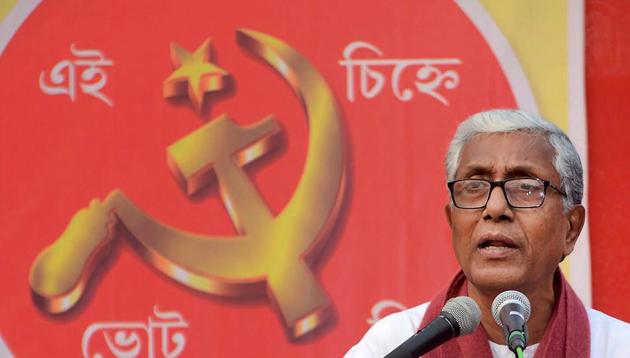The CPI(M)’s ideological confusion is at the core of Tripura defeat
CPI(M) was punished by the voters despite performing well on macro development indicators. This is because the voters felt the government had failed to improve their individual economic well-being. Prime Minister Narendra Modi’s appeal of choosing HIRA (Highway-Iway-Roadway-Airway) over Sarkar to voters in Tripura conveyed this exact message: a communist party continuously ruling the state had led to stunted growth of capitalism.
The defeat of the CPI(M)-led Left government in Tripura has evoked two kinds of responses. One sees it as an ideological victory of right-wing politics in the first direct contest between the BJP and the Left parties. The other, shared by mMany on the Left, sees it as something that reiterates the need for an all out unity against the BJP. Neither of these theories gives us a complete picture of why the CPI(M) lost the elections.

The BJP assimilated the entire opposition rank and file from parties such as the Congress and Trinamool Congress in Tripura. Clearly, pragmatism rather than ideology was in command. Because this happened even a wider unity of secular forces would not have helped the Left.
What really happened then?
A post-poll survey conducted by CSDS-Lokniti offers some insights. Manik Sarkar had the highest popularity rating among the chief ministers of Tripura, Meghalaya and Nagaland, the three states which went to polls. Tripura fared the best among the three states on questions of whether development, condition of poor, healthcare, education, roads, drinking water supply, security and power supply had improved in the past five years. These figures rule out widespread notions of misrule.
But despite a favourable image on delivery of social services and development indicators, Tripura had the highest share of people who were dissatisfied with the government among the three states. Tripura also fared the worst on two key economic indicators: prices and employment.
To put it simply, the CPI(M) was punished by the voters despite performing well on macro development indicators. This is because the voters felt the government had failed to improve their individual economic well-being. Prime Minister Narendra Modi’s appeal of choosing HIRA (Highway-Iway-Roadway-Airway) over Sarkar to voters in Tripura conveyed this exact message: a communist party continuously ruling the state had led to the stunted growth of capitalism.
To be sure, this charge is not new for the CPI(M). The Left Front government in West Bengal faced similar accusations when it was in power. It is another matter that in its overdrive to promote industrialisation, the party ended up alienating the peasantry, which was its biggest support base.
Interestingly, the CPI (M)’s own party-programme acknowledges the challenges faced by its state governments in bringing any big relief to the people. It says, “The formation of such governments will strengthen the revolutionary movement…however, (it) would not solve the economic and political problems of the nation in any fundamental manner. The Party, therefore, will continue to educate the mass of the people on the need for replacing the present bourgeois-landlord State and government headed by the big bourgeoisie even while utilising opportunities for forming such governments in the states or the Centre, depending on the concrete situation, and thus strengthen the mass movement.”
Given this context, it would be unfair to blame Manik Sarkar and his comrades in Tripura – a small resource-starved state – for failing to ‘educate’ the voters about the virtues of electing them once again. There was no intellectual help from the party headquarters. The irony is, the party is now debating whether or not to ally with the Congress, the oldest bourgeois party in the country.





